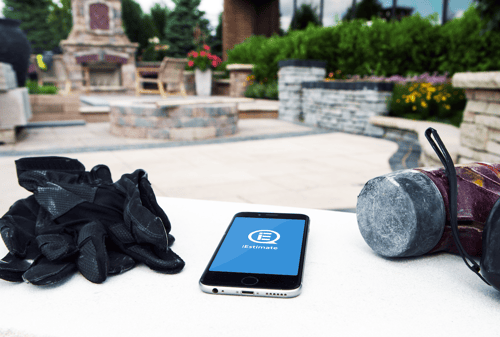 Do you find it much easier to choose entry-level employees than you do good crew leaders? If you do, then you’re not alone. Most landscape companies say that finding crew members who would make good crew leaders or foremen is a major challenge.
Do you find it much easier to choose entry-level employees than you do good crew leaders? If you do, then you’re not alone. Most landscape companies say that finding crew members who would make good crew leaders or foremen is a major challenge.
The biggest reason for this is the fact that leadership takes both hard skills and soft skills. Your crew members might be great at doing their work but when it comes to managing people, you suspect they’ll fall short.
While the hard truth is that some people may simply never have what it takes to be a leader, the good news is that soft skills can be honed and developed in the right people. Some of your crew members might just require some extra attention and training to develop the skills they need to succeed.
Arden Urbano, president of GREENIUS, knows a lot about training. In fact, it was a lack of training tools in the marketplace that led the development of the online training that GREENIUS offers to landscape companies across the U.S. and Canada.
We recently spoke with Urbano about what she thinks is needed to help landscape businesses to develop successful landscape crew leaders and foremen.
1. Make Sure Your Leader “Fits the Bill”
There’s no question that there are certain characteristics that make an employee fit to be a crew leader or foreman. Urbano says that some of the characteristics that she has observed in a good crew leader include the following.
 Proficient in equipment operation
Proficient in equipment operation - An ongoing ability to be efficient (and to care about efficiency)
- Showing up for work every day, on time
- Demonstrating a strong work ethic
- Having a desire to “move up” within the company and continually improve
- Setting a positive example
“In other words,” says Urbano, “the workers that ultimately become crew leaders are your best crew members. It’s not a job for just anyone. It’s for those that work the hardest, care the most, and set the best example for the rest of your team.”
Of course, that’s not everyone. Some people just aren’t a good fit to be a leader—even if they have the skills. It’s important to note that skills alone do not make a leader. There’s so much more to it than that.
A crew member who is really good at operating the machinery or doing the work, but who never shows up on time nor is attentive to detail, is never going to make a great leader. It’s important that you seek out your employees who will set the best possible example for everyone else.
2. Create Job Descriptions for Your Leader Roles
 Urbano says that job descriptions are vital because, without them, you can’t really expect your foreman or crew leader to know exactly what they should be doing upon moving into their new role. A job description is a communication tool that not only conveys what you expect your leaders to do on a daily basis but also what qualifications and capabilities they should possess within that role.
Urbano says that job descriptions are vital because, without them, you can’t really expect your foreman or crew leader to know exactly what they should be doing upon moving into their new role. A job description is a communication tool that not only conveys what you expect your leaders to do on a daily basis but also what qualifications and capabilities they should possess within that role.
Yes, you do need to spell it all out.
The biggest mistake that landscape business owners make is failing to create thorough and detailed job descriptions and then just expecting their leaders to know exactly what they're supposed to do. A proper job description should help set expectations and set your crew leader or foreman up for success.
Urbano says that a job description should make it clear what you will be measuring your crew leaders’ performance on.
“A job description should essentially say, here’s what we expect you to do and here’s what we’ll be measuring you on,” she says. “It should include those key performance indicators (KPIs) which are a type of performance measurement used to evaluate how your people are doing. You need to be clear with your team about what you’re evaluating.”
3. Set Benchmarks and Define a Path to Achieve Them
Along with measuring how your employees are doing, Urbano says that you should also be setting benchmarks for your leaders so that they know what goals they should be aiming to hit.
However, Urbano says that in order to be most effective, you should also give team members an idea of “how to get there.” In other words, set goals that are attainable and provide the support that they need to reach them.
Urbano says that developing your benchmarks might involve looking at questions such as some of the following.
- Did you hit your numbers for the week?
- Did you have to engage in a lot of overtime?
- Were there any customer complaints?
- Were crews consistently timely?
This is important data to keep track of, which many successful landscape companies calculate with the use of landscape business software.
4. Create a Reward System for Meeting Goals
Urbano adds that she is a big believer in rewarding crew leaders, and their crews, for meeting their goals. It encourages them to “keep up the good work.” Research indicates that reward systems absolutely play a role in keeping morale high and that’s important for continued success.
 “Reward programs are very important and something that you see a lot of great landscape companies doing,” Urbano says. “You have to come up with a reward system that works best for you.”
“Reward programs are very important and something that you see a lot of great landscape companies doing,” Urbano says. “You have to come up with a reward system that works best for you.”
Urbano says that she has seen some companies have a ‘Crew of the Week’ contest where the entire crew wins a weekly award. Measuring crews against one another can be another unite the team as they work together toward a common goal.
Plus, a little bit of friendly spirited competition can drive crews, and crew leaders, to perform better. This helps benchmark to compare the company’s success as a whole.
“There are a lot of ways to set up rewards,” continues Urbano. “I’ve also seen high-performing crews earn tickets throughout the year. Around the holidays, they all go into a drawing for a large cash prize at the end of the year. The point is, there are different ways to do it and you have to find one that works for you. If it motivates your people, then it’s a good reward system.”
5. Utilize Training Resources
Training resources can also be utilized in order to develop great landscape crew leaders or foremen. Training videos are a great tool to help hone soft skills or provide some framework for assuming a leadership role.
Of course, you could also develop your own in-house training program with classes that your leaders are required to take. And don’t forget about seminars and courses provided by trade shows and other industry events. There are often topics focused on leadership training that your new crew leaders could benefit from.
6. Provide Ongoing Training After Promotion
 The initial period when your crew member is moving into their new leadership role is not the only time that you should provide training and support, says Urbano. Keep in mind that this person may very well have questions or require help long after assuming the role.
The initial period when your crew member is moving into their new leadership role is not the only time that you should provide training and support, says Urbano. Keep in mind that this person may very well have questions or require help long after assuming the role.
Your crew leaders need to know that you’re there if they need you. They shouldn’t feel as though they’re totally on their own if they have a question or require some additional support. A well-supported crew leader is going to be a successful one.
A great way to provide ongoing support to your new crew leaders is with one-on-one meetings. One-on-one meetings are exactly what they sound like—an opportunity to sit down face-to-face with one of your leaders and communicate. You should be keeping notes from your one-on-one meetings and plan to store that information so that you can track your new crew leader’s progress and address concerns that arise.
Having a place to store all of this data and easily retrieve it in real time is key. With landscape business software you can not only track various pieces of data, but you can store and retrieve the information at any time.
Remember: You Don’t Have to Do it Alone
 At the end of the day, Urbano says that she hopes more landscape business owners will recognize that they don’t have to do it all on their own. Training and developing great leaders is a daunting task but one that can be achieved with a little bit of help.
At the end of the day, Urbano says that she hopes more landscape business owners will recognize that they don’t have to do it all on their own. Training and developing great leaders is a daunting task but one that can be achieved with a little bit of help.
“Simply put, technology makes for better business,” Urbano says. “Companies like ours, and like Include Software’s, are out there to help provide support so that these companies can perform better.”
Urbano says that most landscape business owners she’s met with didn’t earn an MBA, and that’s okay. She says they got into the Green Industry because they’re passionate about the work, probably not about business. But she adds that there is no shame in leaning on the support that is out there.
“At GREENIUS we believe that education is key,” Urbano says. “You can have better training and support through our product. And with Asset, you can run your business more efficiently and more accurately. These tools make your business better and that’s why we’re here.”
If you’re ready to see how landscape business software can help you run a more efficient business, or you have questions on tracking information on your developing crew leaders, then let’s explore and see what Asset can do for you.
Image sources: GREENIUS, Live Green Landscapes, T. Lake Environmental Design, Neave Landscaping



